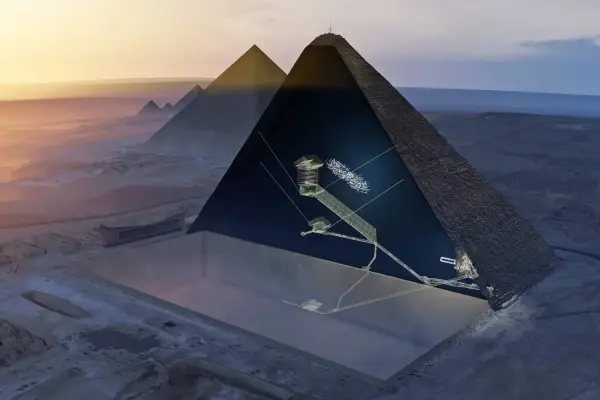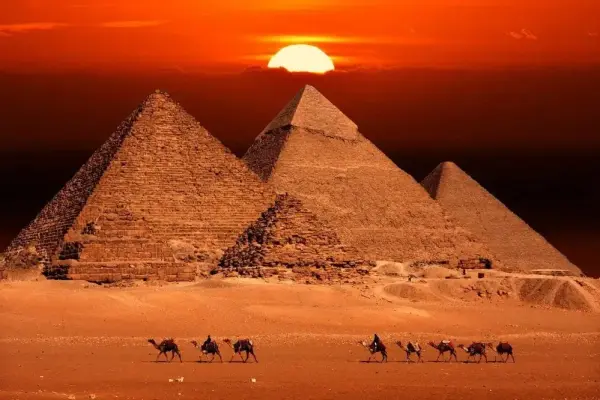
Table of contents [Show]
16 Oct 2024
Mortuary Temple of Hatshepsut
Hatshepsut Temple Introduction
In 1458 BCE, Hatshepsut became the first female pharaoh of Egypt. She reigned for more than two decades and oversaw many successful trade expeditions and building projects, including the construction of her own mortuary temple at Deir el-Bahri. Hatshepsut's temple is one of the most iconic buildings in Egypt, and its design has been copied and adapted by architects throughout history. In this blog post, we will explore the history and design of the Mortuary Temple of Hatshepsut.
Don't miss the Hatshepsut temple during your Egypt tours .
Hatshepsut Temple Location
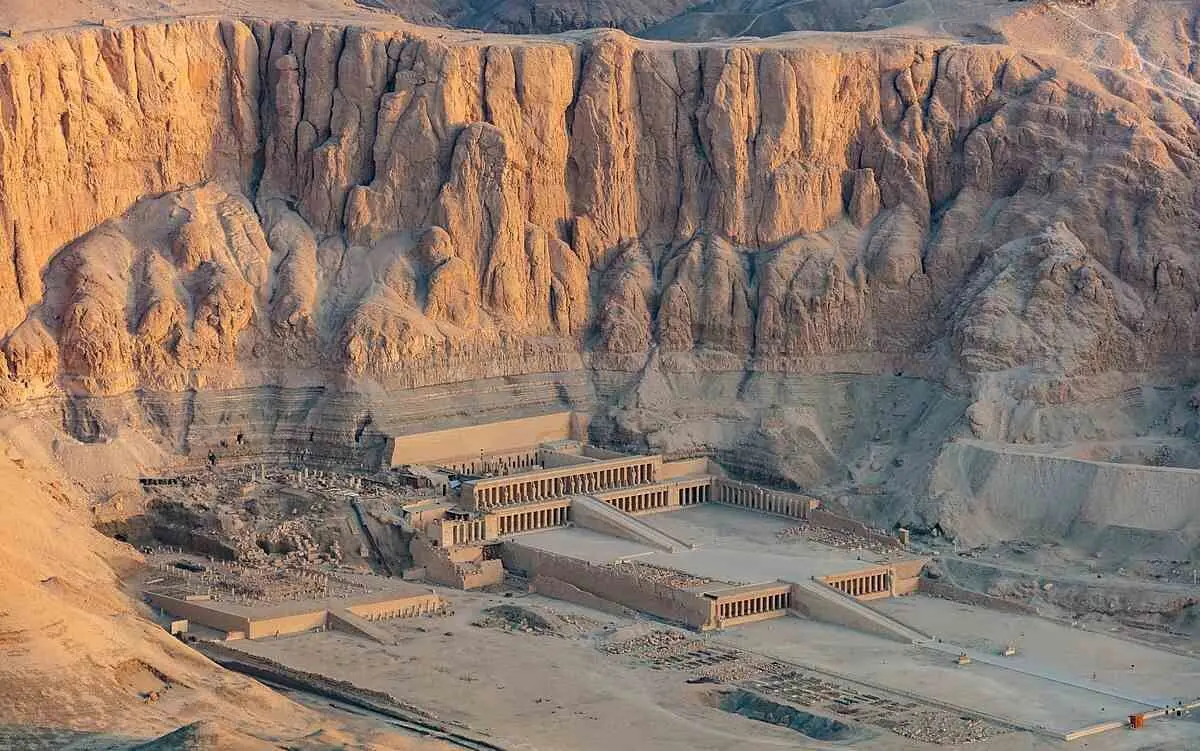
The Mortuary Temple of Hatshepsut, located in Luxor, Egypt, is a temple dedicated to the memory of Pharaoh Hatshepsut. It was built during the 18th dynasty, in the early part of her reign. The temple is situated on the west bank of the Nile, near the Valley of the Kings. They are the top two attractions in Egypt classic tours and in the world due to their importance.
Senenmut, Hatshepsut's architect, created the Mortuary Temple. It is regarded as one of Egypt's most exquisite temples. Three floors make up the temple: the sanctuary, a colonnaded courtyard, and an open courtyard.
The open courtyard contains a statue of Hatshepsut as a sphinx, as well as two obelisks that were erected in her honor. The colonnaded courtyard is surrounded by pillars decorated with reliefs depicting scenes from her life and reign. The sanctuary features a statue of the goddess Hathor, to whom Hatshepsut was closely linked.
Hatshepsut Temple Function
One of the most beautiful structures in Egypt is the Hatshepsut funerary temple. It was constructed in Pharaoh Hatshepsut's memory, who ruled Egypt for more than 20 years. On the western side of the Nile River, the temple is situated in the Valley of the Kings.
The temple was erected during two stages. Hatshepsut's reign saw the completion of the first phase, while Thutmose III, who succeeded her, completed the second phase following her passing. Hatshepsut's body could be interred there, and the temple was intended to serve as a shrine for her soul.
An upper section, a middle section, and a bottom section make up the temple's three main sections. A collection of sculptures that show Hatshepsut as a goddess may be seen in the upper portion. Her grave lies in the centre of the area. The bottom part also has a number of courtyards where celebrations and ceremonies were performed in her memory.
The Mortuary Temple of Hatshepsut is one of the most well-preserved ancient Egyptian temples. It is also one of the most visited tourist sites in Egypt luxury tours .
Hatshepsut Temple Design
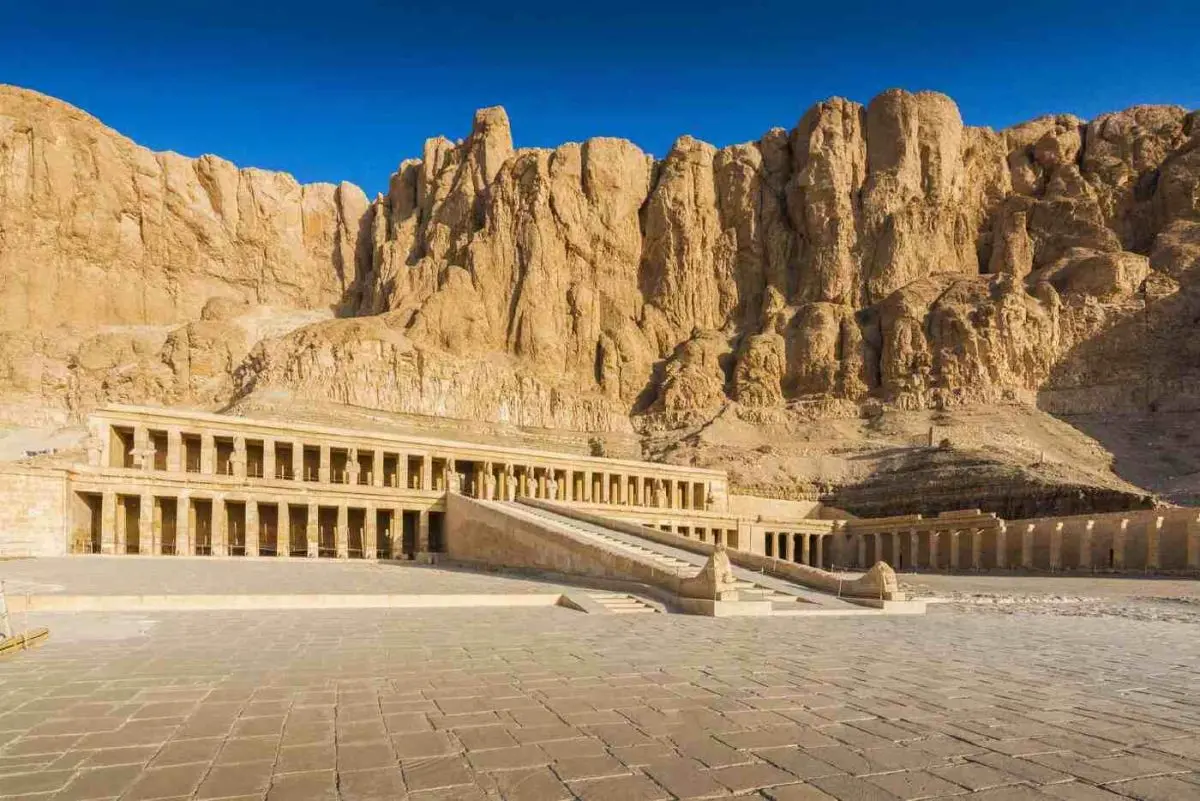
One of Egypt's most recognisable landmarks is the Mortuary Temple of Hatshepsut. It stands in the Valley of the Kings and was created by the renowned architect Imhotep. Hatshepsut, one of Egypt's most prosperous pharaohs, is remembered at the temple, which was constructed in her honour. A central court, an inner sanctuary, and an outer court make up the temple. Several sculptures and reliefs on the outer court show Hatshepsut's achievements. A statue of Hatshepsut may be found in the centre court. She was buried in her mummy in the inner sanctuary.
Hatshepsut Temple Construction
During the early years of the Pharaoh Hatshepsut's reign, about 1479 BCE, work on the Mortuary Temple of Hatshepsut started. The temple, which was built in Egypt next to the Valley of the Kings, was created as a memorial for the Pharaoh's final resting place.
Senenmut, an architect and trusted adviser of Hatshepsut, created the temple. He may have also acted as her main minister, or vizier. The limestone cliff face had been cut into a series of terraces, on top of which the temple was constructed.
A set of columns supported the lowest terrace, which was 50 by 50 metres in size. The second terrace, smaller than the first and devoid of any supporting columns, could be accessed by a ramp. The third and final terrace, where the main structure of the temple stood, was reached by a flight of stairs.
The main temple building had two floors and a courtyard in the middle, measuring 30 by 60 metres. The six massive columns on the front facade were capped with lotus-bud capitals. A relief sculpture illustrating one of Hatshepsut's numerous accomplishments during her reign was placed between each column.
Hatshepsut Temple Later History
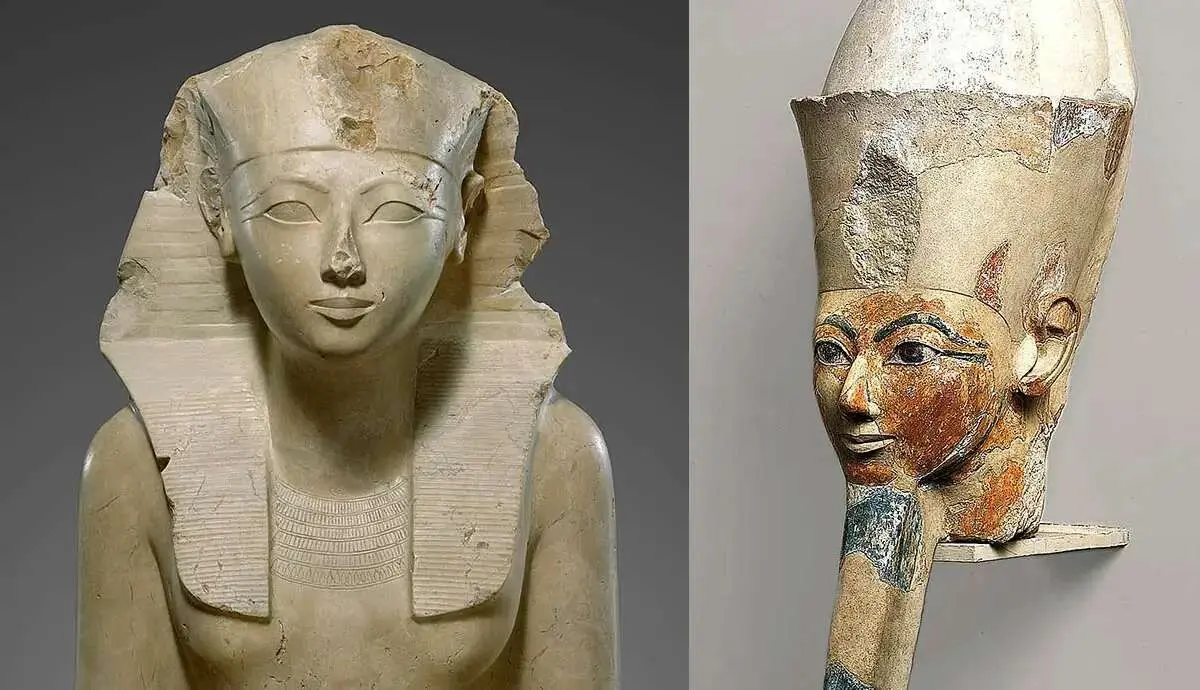
One of Egypt's most famous temples is the Hatshepsut funerary temple. The temple was constructed in modern-day Luxor to commemorate Hatshepsut, one of Egypt's most prosperous pharaohs.
Hatshepsut ruled Egypt for more than twenty years, and during that time she oversaw the construction of a variety of remarkable structures, including her mortuary temple. The temple was crammed with sculptures and representations of the pharaoh and was intended to serve as a location where Hatshepsut could be worshipped after her passing.
Thutmose III, Hatshepsut's nephew, ruled Egypt after her passing. He made an effort to destroy all reminders of Hatshepsut's authority, including her funerary temple. He was unable to totally demolish the temple, and the majority of it is still standing today.
The Hatshepsut Mortuary Temple is a significant archaeological site and a well-liked tourist destination in Egypt. One of Egypt's most intriguing pharaohs' life and times are revealed through the temple.
Hatshepsut Temple Excavations
The renowned Egyptian queen Hatshepsut built it during the 18th dynasty. On the west bank of the Nile, close to Luxor, sits Deir el-Bahari, where the temple may be found.
French archaeologist Auguste Mariette conducted the temple excavation in 1859. Then, in the early 20th century, Egyptian archaeologists reconstructed it. A sanctuary is located on the highest level of the temple's three floors. A number of courts and halls can be found on the first level, and colonnades can be found on the second.
One of the most well-preserved ancient Egyptian temples is the Temple of Hatshepsut. In addition to being a well-liked tourist site, it sheds light on one of Egypt's most prosperous kings' reign.
Day tour of Hatshepsut Temple
One of the most visited tourist destinations in Egypt is the Hatshepsut Temple. One of the most powerful women in ancient Egypt, Queen Hatshepsut, constructed the Hatshepsut Temple, which is situated in the Valley of the Kings.
Three levels make up the temple, and each has distinct characteristics. Huge pillars and sculptures of Hatshepsut and her husband Thutmose III can be found on the first floor. The third level boasts a stunning perspective of the Nile River, while the second level features a number of chambers and halls.
All three of the temple's floors may be explored by those who are interested in learning more about Queen Hatshepsut's and ancient Egypt's past.
You can visit Hatshepsut Temple during your Luxor day tour , check out our amazing Egypt tour packages including Luxor.

